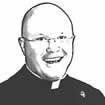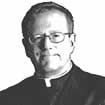
Faith
... the now common practice -- baptism-Eucharist-confirmation -- of the Western Church is only about 120 years old. An honest review of the history of this sacrament would probably reveal that we haven't always done it this way.
The Church has and continues to identify three sacraments of initiation -- baptism, confirmation, and Eucharist. Note the order; it's traditional, and this order appears in the Catechism of the Catholic Church and in both Codes of Canon Law. Most of us received and continue to receive them as baptism-Eucharist-confirmation. Well, most of us in the Western Catholic Church. Other Roman Catholics of the Eastern Churches receive them in the traditional order, as do the Eastern Orthodox.
There is general agreement that the traditional order is proper. What is often a sticking point is the age at which confirmation is to be received.
The literature -- books, articles, theses, dissertations -- about this sacrament in English alone would take up several shelves of library space or lots of bytes in your computer memory.
First, in Eastern Churches, both Roman Catholic and Orthodox, infants are baptized, confirmed (more properly "chrismated"), and receive first Eucharist at the same liturgy. In Eastern Churches, bishops and priests are the usual ministers of the initiation sacraments. This constant practice beautifully underlines a sometimes-lost truth about all the sacraments and their grace: they are gifts of God. God gives them and we really can do nothing to "deserve" them.
In the Roman Catholic Church of the West, this was the practice until there were too many of us, and the bishop could not celebrate all the sacraments of initiation for his people. He simply had to permit priests and then, later, deacons to celebrate the baptisms, while reserving to himself confirmation and usually First Eucharist (often at the same ceremony) at the age of reason, usually seven. Though sometimes, both sacraments were delayed until the age of 12 or 14.
Pope St. Pius X permitted -- even ordered -- that First Communion be celebrated at the age of discretion -- seven. The saintly pope wanted more Catholics to receive Holy Communion more often, and he wanted them to start as early as possible. What he did not do was remind bishops that confirmation ought to precede First Communion. He may have presumed that the bishops would follow that ancient principle: "We've always done it this way."
So, the now common practice -- baptism-Eucharist-confirmation -- of the Western Church is only about 120 years old. An honest review of the history of this sacrament would probably reveal that we haven't always done it this way.
There are several constants about the theology of this sacrament that tell us about the faith of the Church regarding this sacrament, no matter the age we receive it.
Pope St. Paul VI, following the command of the Second Vatican Council, revised the sacrament in 1971. An initial English translation soon followed, and a revised English version of the currently celebrated version appeared in 2016.
Only those who have already been baptized may receive this sacrament. It is the second of the three "unrepeatable" sacraments. Baptism is the first that marks us as Christ's. Confirmation pours into our lives a new growth in the grace of Baptism reinvigorating the Gifts of the Holy Spirit. It is a second mark by which God claims us for Christ and readies us for participation fully in Christ's life by the reception of the Eucharist. The grace received enables the baptized and confirmed, strengthened by the frequent reception of the Eucharist, to witness before all in word and deed the Catholic faith.
The bishop is the original and ordinary minister of this sacrament. He may delegate certain priests to celebrate the sacrament in his name. The connection between the bishop and confirmation is maintained by the sacred chrism, which not only the bishops but the delegated priest use for confirmations. The chrism is consecrated by the bishop at the annual Chrism Mass.
The Order of Confirmation in use in the United States since 2016 provides for the celebration of Confirmation within or without Mass, by a priest, and in danger of death.
In all cases, the sacrament is received by the imposition of the hands of the celebrant, the prayer over the confirmand, and the anointing on the forehead with sacred chrism and the words "Mary (John) be sealed with the Gift of the Holy Spirit."
For those who want to review all of this a bit more, start with the Catechism of the Catholic Church #1285 to 1321. For a more detailed and ecumenical look at confirmation, try "The Baby in King Solomon's Court (Updated)," Paul Turner, Liturgy Training Publications, 2006.
Recent articles in the Faith & Family section
-
The Christmas crecheFather Robert M. O'Grady
-
Feeling like ChristmasJaymie Stuart Wolfe
-
Parish priests and their peopleMsgr. Frank Kelley
-
Be the carolArchbishop Richard G. Henning
-
Give a Christmas Gift to the MissionsMaureen Crowley Heil


















